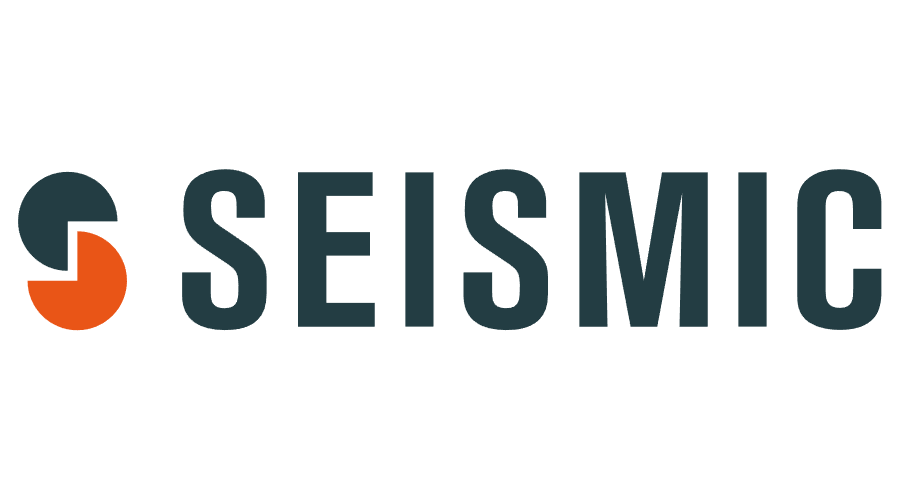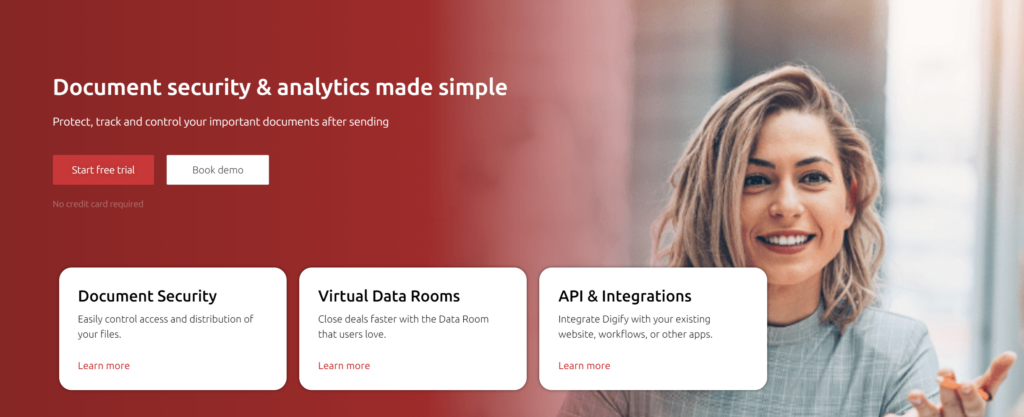Document management software is increasing in popularity. More and more companies are going paperless, and since remote work experienced a 159% growth over the last decade, there’s little need for filing cabinets.
With access control, companies can manage who has access to sensitive data. Additional features, such as a collaboration tool and a customizable workflow possibility, make the software solutions even more enticing.
This article will help you find the best document management system for you. Although all serve the same purpose, solutions vary in additional features, pricing, etc. What works for a medium-sized IT company might not work for a single lawyer’s office.
First, let’s explain what document control software is.
What is a Document Management Control Software?
Document control software (or document management software) is a tool that companies use for business process automation. Instead of managing documents manually, companies can sort critical business documents automatically.
Industries that often have a document management system are healthcare, pharmaceutical, SaaS, machinery, construction, etc.
The main reasons why companies use digital solutions are:
- Records Management – Speeds up the process of saving and retrieving information essential for daily document workflows.
- Document Security – Organizations in heavily regulated industries like government and healthcare emphasize security. They require solutions that provide high levels of protection for digital documents.
- Data Recovery – Companies can retrieve documents during an accident or data loss.
Without further ado, here are the top ten document management systems you can find on the market.
10 Best Document Control Software
Document control software is essential for any company dealing with significant daily files. Here are the top ten picks to do the job of picking the right system for your business.
1. PowerDMS

Price: Per user. Ask for pricing.
Free Trial: Yes.
Best For: Public sector, law enforcement, healthcare.
PowerDMS is a strong candidate for the best document management software. It does not have features other business solutions lack, but it has everything a general user would expect from a digital document control software.
You can instantly store documents and retrieve them when needed, and PowerDMS vouches for top file safety.
But, looking under the hood, you’ll find many intriguing options. First, although quite intuitive, PowerDMS offers training management if you have a bigger team and want everyone to get the same knowledge.
Furthermore, although it might seem like a regular DCS, PowerDMS’s most significant users, such as law enforcement, stem from the public sector, requiring high-level security and management.
With PowerDMS, you can effectively manage access to sensitive documents and prop alerts, enable approval process control if you need one, and other more advanced security features.
That also means (depending on the workload) that while general users will have no problem using PowerDMS, administrators might have a slight learning curve to catch up with all the subtle possibilities.
Finally, although document control software does come with the session timeout option (important for administrators, so they don’t accidentally leave the system open), there’s no customizing option. Because of that, PowerDMS can prompt a timeout while you’re uploading huge file batches.
2. Klippa

Price: $2.49 to $4.99 per user per month. Free version available.
Free Trial: Yes
Best For: Startups, small to mid-sized companies, corporations.
Klippa has a more modern approach to document control and document management. Although not as popular as most of the other document management systems you’ll find on this list, that doesn’t mean Klippa doesn’t give other candidates a run for their money.
First of all, if you’re tired of old-looking UI, Klippa has a fresh, aesthetically pleasing design. Granted, visuals aren’t the primary reason companies buy document management systems, but it is the first thing that pops up.
Fortunately, instead of being just the prettiest of the bunch, Klippa is an effective document management system. One of the main reasons is its optical character recognition. OCR is great because the system sorts documents the moment you upload them. This saves time with larger file banks since you don’t have to do the additional sorting after uploading bigger batches.
Other vital features are approval process control, data verification and extraction, audit readiness, and collaboration tools.
Klippa also offers employee training and is generally used mainly by small to mid-sized companies but can also serve enterprises.
3. Seismic

Price: Upon request.
Free Trial: Upon request.
Best For: Companies with a sales and marketing team.
Like other cloud-based solutions, Seismic is a centralized repository that automates workflow processes with the ability to quickly organize documents, file sharing, document authoring, and other features you’d expect from document control software.
One nifty feature is automatically stale dating certain documents. Although not too flashy, it can save a lot of time when you want to ensure compliance. Files get lost, and an expired invoice might go under the radar even if you have multiple administrators. But with Seismic, that will never happen since the DMS system keeps a watchful eye no matter how many files you have.
This is great for business continuity since it’s less likely that you’ll end up in an annoying situation where you have to backtrack files.
Furthermore, Seismic’s search feature stands out. It’s effortless to find the document you need and any related files. All you have to do is type in the keyword, and Seismic will list what you’re looking for easy access.
Finally, if you’re working with clients, you can create and present data in a slick custom website, making client interaction much easier. Instead of being extra careful when sharing files with external users, you can share the exact data you want on an external website.
4. Digify

Price: $99.00 per feature per month.
Free Trial: Yes
Best For: Companies interacting with external users.
Besides being one of the more straightforward document management systems, Digify is customizable.
Digify shines in sharing files and interacting with possible clients digitally. You can securely share files (PDF, video, audio) using virtual data rooms. Imagine a data room as a private digital space where you can perform contract negotiation with zero document control challenges, such as who can access files and poor security.
You can even do a document review or collect electronic signatures (through integration with software such as DocuSign). Since you can use Digify via mobile devices (iOS and Android), mobile access makes digital data rooms even more accessible. Finally, Digify takes care of security protocols, so you don’t have to second-guess whether you should share a particular document.
You’ll rarely need customer service since the document management system is highly intuitive. If you want to customize user permissions, you’ll figure it out in seconds, and the same goes for most of the other options.
Although Digify doesn’t have an option to discourage users from taking screenshots or video records, you can integrate such solutions.
5. Document Control by MediaLab

Price: $625.00 per feature per month.
Free Trial: Yes.
Best For: Healthcare.
Document Control by MediaLab is a niche software aimed at healthcare companies such as laboratories, clinics, and hospitals. While it won’t be the best fit for business processes outside the niche, this document control system might be the perfect fit if you’re a doctor or running hospital documents.
Besides making daily document control management easy, Document Control helps with other tasks that a clinic or hospital has, such as preparing for quality evaluations.
Being inspection-ready saves time for the organization and creates a professional look when the inspection arrives. Instead of spending several weeks getting all the documents you need, access is at your fingertips even if the inspectors ask for something you didn’t prepare.
It’s easy to organize files and automate processes for documents you won’t find outside healthcare, such as health policies and procedures.
Unfortunately, Document Control doesn’t have mobile apps for mobile access. On the other hand, it’s even understandable considering the environment in which clinics and hospitals operate. As mentioned, this document management software is for healthcare professionals and delivers everything you’ll need in a health institution.
6. eFileCabinet

Price: $1200.00 per feature per year.
Free Trial: Yes.
Best For: Human resource, legal, and accounting.
If you could imagine a classic, real-life file cabinet in the digital space, it would be eFileCabinet. But instead of messy paperwork, cumbersome business processes, and clunky document control, you can access your entire business with a single click of a mouse.
One of the reasons eFileCabinet works so well for back-office companies or departments is how easy it is to perform document version control. Legal and accounting, especially, can quickly get lost in countless document versions. But instead of checking files individually, you can perform a version control in a couple of seconds.
Further down the line, eFileCabinet also saves time syncing up documents. Although there’s not much difference between Microsoft Office Word and Google Docs for the user, systems often receive errors. The unpredictability of the issue can waste many unnecessary hours.
eFileCabinet solves the issue by offering a multi-version ecosystem. No matter the software your team uses, this document control software helps you find what you need in a second.
eFileCabinet also allows sharing of small and large documents with people outside the company without compromising security.
But, the software comes at a relatively high annual price, so it comes down to your niche and what you are looking for.
7. IT Glue

Price: $29.00 per user per month. Possible free version.
Free Trial: Yes.
Best For: IT companies.
As evident from the name, IT Glue is a document management software with IT in mind. The key reason why IT Glue is so great for IT companies is that it’s SOC 2 compliant. Although it doesn’t say much for most companies outside IT, it’s a dealbreaker for IT.
SOC 2 is an auditing procedure that checks companies to ensure appropriate data security and protect clients’ and partners’ privacy. Having specialized revision control can help such companies save time and feel more confident.
Such a company often fails the audit for minor reasons they weren’t aware of. As such, IT Glue helps so that no stone is left unturned.
Since IT companies work with outside clients, having a document management system with features that help sort all your documents per client is crucial. This way, client support becomes more straightforward and less incommodious for the back office.
Although IT Glue has several default templates for various files, such as API documents, you can pick and customize them per your needs. Finally, IT Glue packs all the expected features, such as importing, exporting, and version control.
The UI might seem a bit boring and uninspiring. Although the service can work on particular “quality of life” improvements, it’s an excellent pick for anyone in IT.
8. Qualtrax

Price: Upon request.
Free Trial: Yes
Best For: Small to enterprise-level companies.
Qualtrax tries to provide everything for everyone, and it does quite an excellent job of doing so. Instead of taking the niche route, Qualtrax goes the opposite by packing everything a general business needs, such as revision control, access controls, centralized repository, and collaboration tools.
The ease of sharing technical documents and other quality processes somewhat reminds me of Microsoft SharePoint. It’s intuitive, and you won’t spend too much time figuring out how to do the task. If a user requests access, you can provide simple web forms and include everything the user would expect.
Since Qualtrax comes with a great mix of features, it’s good to know that you can customize it to your needs. For example, suppose your company needs a quality control solution (document management and audit readiness) but doesn’t need management for automated workflows. In short, the document control software helps with what you need instead of throwing countless features and you hoping that some will stick.
Regarding disadvantages, the elephant in the room is that it might not be perfect for users looking for document control software tailored to their niche.
Nevertheless, Qualtrax is a solid solution for anyone who needs quality software to help with document management.
9. PandaDoc

Price: $19.00 per user, per month.
Free Trial: Yes.
Best For: Small to enterprise-level companies.
Like Qualtrax, PandaDoc throws a wide web to catch as many users as possible. But, PandaDoc does is by improving general document generation, such as creating quotes, proposals, and contracts.
One tool in PandaDoc’s arsenal is fair pricing, which works both for startups and enterprise content management. But more importantly, PandaDoc packs several unique features.
One of them is tokens that you can use as tags. If you’re managing several clients, accidentally typing in one client’s name in a document intended for another is more than an uncomfortable situation. Every document for external users must be 100% correct, and tokens take the stress out of this essential daily routine.
Additionally, it’s relatively easy to set up and customize the document management system according to your preferences, and the dashboard provides an excellent overview of document status.
Going for an expensive product can be discouraging if you’re running a company that sends only about four documents per month. On the one hand, you need to ensure the four papers are correct and sent to the right entity, but paying hundreds of dollars is too much.
PandaDoc knows there are many such businesses around the globe, and it’s the main reason why user-friendliness and acceptable pricing work so well.
10. Wrike

Price: $9.80 per user, per month.
Free Trial: Yes
Best For: For mid-sized and enterprise companies with multiple teams.
Wrike is one of the big players on this list. Although that’s not why we included it in our list, the service’s seniority does offer a certain level of confidence.
Wrike is on our top document management software list because of its perfect team and document management mixture. Generally speaking, one software equals one solution, which is preferable, but Wrike manages to walk that tight rope between the two. One of the reasons is the unique capability to integrate another document management system. Although this won’t be useful to everybody, it can be pretty helpful for transitions and keeping everything in a single dashboard.
Additionally, since Wrike employs certain team management elements such as tagging, tracking working hours, and project schedules, it’s excellent for companies with multiple teams working on the same project. Besides helping you eliminate paper records, you can also stay on top of your projects.
Wrike does its best to organize many features in a clean and intuitive package. The UI is aesthetically pleasing and functional. Furthermore, the learning curve isn’t steep.
But when you combine document control software with another service, you’ll always have minor bumps. Although nothing specific (as mentioned, Wrike does an excellent job managing), you might spend an extra second figuring out a feature if you run several of them.
Conclusion
Having proper document management software solutions is essential in today’s work environment. More and more companies are going remote, directly impacting the internal organization, and the shift is impacting how businesses interact with each other.
Partnerships and decisions are made quicker than before, and having a tight grasp over document control can be the difference between success and failure.
Although almost every document management system on the market will provide general features that you need, it’s always better to spend an extra minute digging for the specifics. By doing so, you’ll pinpoint not just a generally helpful solution but also a system that’s perfect for you.
Many document control providers focus on a specific industry to grasp an untapped market. For you as a user, the more companies compete, the better the overall quality.
If you’re merely looking for general document control software, then the best option is to go with one that does everything well.
By being conscious of what you need, instead of what might be the best in general terms, you increase your chances of making the right choice and saving time long-term. Good luck.
FAQs
Here are the most frequently asked questions about document control software.
What are the advanced document management capabilities of document control software?
Document control software offers advanced document management capabilities such as version control, access permissions, automated workflows, and audit trails. These key features ensure you manage documents properly, securely stored, and easily accessible while maintaining compliance with industry regulations.
How does document control software improve document management processes?
By automating and standardizing document processes, document control software reduces errors, enhances efficiency, and ensures compliance. It streamlines document tracking, retrieval, and collaboration, enabling organizations to manage information more effectively.
Can document control software facilitate document creation?
Yes, document control software simplifies document creation by providing templates, standardized formatting, and collaboration tools. It ensures consistency and accuracy while allowing teams to work on documents simultaneously, improving overall productivity.
How does the review and approval process benefit from document control software?
The review and approval process becomes more efficient with automated workflows, electronic signatures, and real-time tracking. Document control software reduces bottlenecks, ensures accountability, and maintains a clear record of approvals, enhancing overall document integrity.
Is document control software useful for managing paper documents?
Yes, document control software can digitize and organize paper documents, making them easily searchable and reducing physical document storage needs. By integrating scanned documents into a structured system, businesses can enhance security, accessibility, and compliance.



















